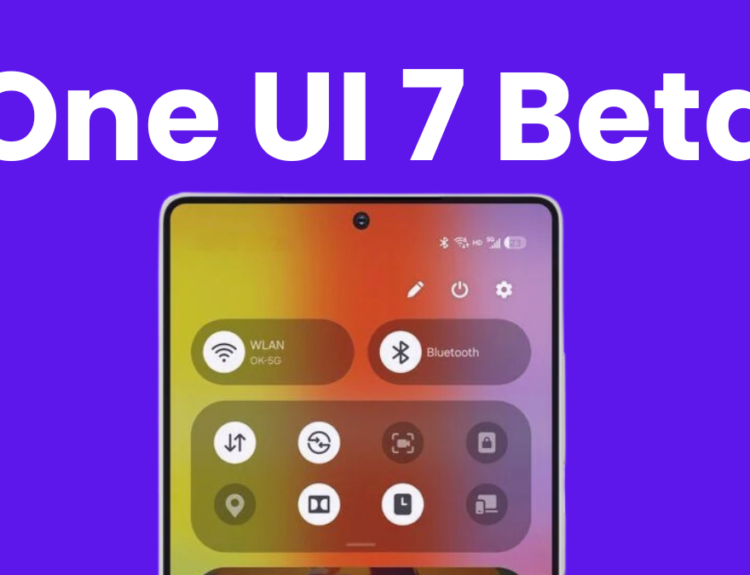Satellite internet has revolutionized connectivity for millions in rural and remote areas where traditional broadband—cable, fiber, or DSL—is unavailable. Once plagued by slow speeds and high latency, it now competes with terrestrial options thanks to technological advancements. In the U.S., three providers lead the market: Starlink, HughesNet, and Viasat. Each offers distinct strengths, but which is best for you? In this 3,500-word review, I’ll analyze their technologies, performance, pricing, reliability, user experiences, and future prospects, enriched with data from PCMag, CNET, and Ookla. A new Top FAQs section addresses common user questions, ensuring you have all the information needed to choose the right provider.
Introduction to Satellite Internet
Satellite internet beams data from orbiting satellites to a dish at your location, bypassing terrestrial cables. It’s a lifeline for rural homes, remote workers, and off-grid adventurers. Historically, it was a last resort due to lag and cost, but innovations like low Earth orbit (LEO) satellites have elevated its performance. Whether streaming, working, or gaming, today’s providers deliver viable solutions. Let’s meet the contenders: Starlink, the disruptive innovator; HughesNet, the reliable veteran; and Viasat, the coverage-focused stalwart. Inspired by PCMag’s comparison, this review dives deeper with fresh insights.
Meet the Providers
Starlink: The SpaceX Revolution
Launched by SpaceX, Starlink debuted in 2019, redefining satellite internet with over 6,000 LEO satellites orbiting at 550 kilometers. This proximity slashes latency and boosts speeds, rivaling cable broadband. Serving 1.4 million U.S. subscribers per FCC data, Starlink aims for global coverage, targeting underserved regions. Its user-friendly dish and no-contract plans appeal to tech-savvy users. CNET’s Starlink review praises its rural connectivity impact.
HughesNet: The Steady Stalwart
HughesNet, a decades-long pioneer, serves over 1.5 million customers, primarily in rural America. It uses geosynchronous satellites (e.g., Jupiter 2 and 2023’s Jupiter 3) orbiting at 35,786 kilometers, ensuring wide coverage but sacrificing speed and latency. Its focus on affordability and availability makes it ideal for basic needs. U.S. News & World Report named HughesNet the Best Satellite Internet Provider in 2024 for reliability.
Viasat: The Coverage Champion
Viasat, with 1.3 million subscribers, operates three geosynchronous satellites (ViaSat-1, ViaSat-2, Anik-F2), with ViaSat-3 Americas launched in 2023. Despite aiming for 100 Mbps, ViaSat-3’s reflector issues limited gains. Viasat emphasizes broad coverage and flexible plans across the U.S., including Alaska and Hawaii. Its Unleashed plan, with no contracts, attracts budget-conscious users. Forbes’ comparison highlights its rural reliability.
Technology Breakdown
Starlink’s LEO Advantage
Starlink’s LEO satellites, orbiting at 342-550 miles, reduce signal travel to 1,100 kilometers round-trip versus 71,572 kilometers for geosynchronous rivals, cutting latency to 25-60 milliseconds. Inter-satellite laser links create a mesh network, minimizing ground station reliance. Its phased-array antenna dish auto-tracks satellites in the Ku- and Ka-bands, delivering high bandwidth. Ookla’s Q1 2024 report confirms Starlink’s median latency at 45ms, ideal for real-time applications.
HughesNet and Viasat’s Geosynchronous Approach
HughesNet and Viasat use geosynchronous satellites at 22,000 miles, fixed above the equator. Operating in the Ka-band, they suffer 600ms latency due to distance. Upgrades like HughesNet’s Jupiter 3 and Viasat’s beamforming boost capacity, but physics limits responsiveness. Their parabolic dishes require professional alignment, unlike Starlink’s DIY setup. FCC disclosures highlight their consistent coverage but performance lag versus LEO systems.
Performance Face-Off
Speeds: Starlink Leads
Speed defines user experience. Ookla’s Q1 2024 data shows Starlink’s median download speed at 64.54 Mbps, peaking at 220 Mbps, with uploads of 11.5-20 Mbps—sufficient for 4K streaming or multi-device homes. HughesNet offers up to 100 Mbps download (post-Jupiter 3) and 3 Mbps upload, while Viasat ranges from 25-150 Mbps download (location-dependent) and 3 Mbps upload. HughesNet and Viasat handle browsing or SD video, but Starlink approaches fiber. CNET’s analysis confirms Starlink’s dominance.
Latency: Milliseconds Matter
Latency impacts real-time tasks. Starlink’s 45ms latency supports Zoom and casual gaming (e.g., Minecraft). HughesNet and Viasat, at 600ms (or 100ms with HughesNet’s Fusion plan), struggle with video calls or gaming, feeling sluggish. PCMag’s testing underscores Starlink’s terrestrial-like responsiveness.
Reliability: Weather and Congestion
All satellite services face weather disruptions—rain or snow can weaken signals. Starlink’s shorter signal path reduces outages, maintaining stability in storms. HughesNet and Viasat users report more weather-related dips, though their fixed satellites ensure coverage when clear. Starlink’s 6,165 satellites (2024) minimize congestion, unlike HughesNet’s three or Viasat’s three operational satellites. SatelliteInternet.com notes HughesNet’s consistency but flags Viasat’s variable speeds.
Cost and Plans
Starlink: Premium Price, Premium Performance
Starlink charges a $349-$499 equipment fee (Standard dish) and $120/month for unlimited data, no contracts—totaling $3,229-$3,379 over two years. Heavy users may face deprioritization during congestion, though rare. Starlink’s website details Residential and Roam plans, with Mobility at $165/month. A $100 congestion fee applies in some areas, per CNET.
HughesNet: Budget-Friendly with Caps
HughesNet’s plans range from $74.99/month (with discounts) to $119.99, with equipment leasing at $15/month or purchase for $499.98. A 100 Mbps plan with 200 GB priority data costs $1,979.76 over two years (leased). Data caps (100-200 GB) throttle speeds to 1-3 Mbps once exceeded, frustrating streamers. HughesNet’s site details its Fusion plan, reducing latency to 100ms for $30 more monthly.
Viasat: Middle Ground
Viasat’s Unleashed plan starts at $119.99/month, with equipment leasing at $13/month, totaling $2,031.76 over two years. Speeds vary (25-150 Mbps), and a soft cap (850 GB) slows speeds during peak hours. Viasat’s promotions include $20/month off for six months. Forbes praises its no-contract flexibility.
Availability and Setup
Coverage: Nationwide Options
HughesNet and Viasat cover 99% of the U.S., including Alaska and Puerto Rico, requiring a clear southern sky. Starlink, with 99.7% household coverage per FCC data, is expanding but faces capacity limits in urban areas like Seattle. Check Starlink’s map for availability. CNET confirms HughesNet’s edge in Alaska.
Installation: DIY vs. Professional
Starlink’s dish is DIY-friendly, guided by an app. HughesNet and Viasat require professional installation ($50-100), ensuring precise dish alignment but adding hassle. SatelliteInternet.com highlights Starlink’s plug-and-play advantage.
User Experiences
Starlink: Transformative
Users praise Starlink’s impact. “I’m rural—no options before. Now I stream 4K and work seamlessly,” says a user on BroadbandNow. Another adds, “Setup was 10 minutes; speeds crush my old DSL.” Complaints focus on cost or beta outages.
HughesNet: Reliable but Limited
HughesNet earns praise for availability. “It’s slow but always there,” a user told Reviews.org. However, latency and caps frustrate: “Video calls lag; after 200 GB, it’s unusable.” It’s a lifeline for basic needs.
Viasat: Functional but Spotty
Viasat users value coverage but gripe about performance. “Reliable until it rains, then it drops,” one shared on SatelliteInternet.com. “Speeds vary—20 Mbps feels like 5 at night.” It’s steady but not stellar.
Real-World Applications
Remote Work
Starlink’s 45ms latency excels for Zoom, Slack, and VPNs, ideal for telecommuters. HughesNet and Viasat’s 600ms (or 100ms with Fusion) handle emails but falter on calls. PCMag recommends Starlink for professionals.
Education
Students need bandwidth for virtual learning. Starlink supports live lectures and uploads; HughesNet and Viasat suit static content but lag in real-time. CNET highlights Starlink’s education boost.
Gaming and Streaming
Starlink’s 64-220 Mbps and 45ms latency enable casual gaming (e.g., Fortnite) and 4K streaming. HughesNet and Viasat, capped at SD video and unfit for gaming, fall short. Ookla confirms Starlink’s streaming superiority.
Emergencies
Starlink’s portable Mini dish aids disaster relief, offering 100 Mbps in crises. HughesNet and Viasat work post-storm but lack mobility. SpaceX showcases Starlink’s hurricane response role.
Top FAQs
Here are answers to the most common questions about Starlink, HughesNet, and Viasat, based on user queries from BroadbandNow, SatelliteInternet.com, and provider websites.
1. Can I use satellite internet for online gaming?
Starlink’s 45ms latency supports casual gaming (e.g., Minecraft, Fortnite), though competitive esports may lag slightly. HughesNet and Viasat’s 600ms latency (or 100ms with HughesNet’s Fusion) make gaming nearly impossible due to delays. PCMag recommends Starlink for gamers.
2. How does weather affect satellite internet?
Rain, snow, or heavy clouds can disrupt signals for all providers. Starlink’s LEO satellites, with shorter signal paths, are less affected, maintaining stability in moderate storms. HughesNet and Viasat, using geosynchronous satellites, experience more outages. CNET advises clear sky visibility for optimal performance.
3. Are there data caps with these providers?
Starlink offers unlimited data, though heavy users may face deprioritization during congestion. HughesNet has hard caps (100-200 GB), throttling speeds to 1-3 Mbps after exhaustion. Viasat’s Unleashed plan has an 850 GB soft cap, slowing speeds during peak hours. SatelliteInternet.com details cap impacts.
4. Can I install satellite internet myself?
Starlink’s DIY setup, guided by an app, takes 10-20 minutes. HughesNet and Viasat require professional installation ($50-100) for precise dish alignment. Reviews.org praises Starlink’s ease for rural users.
5. Is satellite internet available everywhere in the U.S.?
HughesNet and Viasat cover 99% of the U.S., including Alaska and Puerto Rico, with a clear southern sky. Starlink reaches 99.7% of households per FCC data but faces capacity limits in some areas. Check Starlink’s map.
6. Which provider is best for streaming?
Starlink’s 64-220 Mbps supports 4K streaming on multiple devices. HughesNet and Viasat, limited to 25-150 Mbps, handle SD or HD but struggle with 4K or multi-device streaming due to caps and latency. Ookla confirms Starlink’s streaming edge.
7. What are the contract requirements?
Starlink and Viasat’s Unleashed plan require no contracts, offering flexibility. HughesNet typically requires a 24-month commitment, though discounts may apply. Viasat’s terms and HughesNet’s plans detail commitments.
Broader Impacts
Rural Connectivity
Satellite internet bridges the digital divide. Starlink empowers remote work and learning; HughesNet and Viasat cover basics. Cost barriers persist, though FCC’s RDOF subsidies help. Reviews.org notes Starlink’s rural potential.
Environmental Concerns
Starlink’s 6,000+ satellites raise space debris and light pollution concerns. SpaceX mitigates with coatings and collision tech, but astronomers worry. HughesNet and Viasat’s fewer satellites avoid scrutiny. Scientific American discusses LEO impacts.
The Future
Emerging Competition
Amazon’s Project Kuiper and Eutelsat’s OneWeb plan LEO constellations to challenge Starlink, promising affordability. Viasat’s ViaSat-3 targets 100 Mbps, while HughesNet’s Jupiter 3 boosts capacity. CNET predicts a competitive 2025.
Technological Trends
Cheaper satellites, reusable rockets, and advanced dishes will lower costs. Software improvements will enhance performance. PCMag foresees LEO-driven rural broadband growth.
Verdict: Who Wins?
Starlink: Best Overall
Pros: Fastest speeds (64-220 Mbps), low latency (45ms), unlimited data, storm resilience.
Cons: High cost ($3,229/2 years), limited availability in some areas.
Best For: Streamers, gamers, remote workers where available.
Starlink shines for performance.
HughesNet: Best Availability
Pros: Nationwide coverage, affordable ($1,979.76/2 years), consistent service.
Cons: Slower (100 Mbps max), high latency (600ms), data caps.
Best For: Basic needs in Starlink-unavailable areas.
HughesNet is the budget pick.
Viasat: Best Middle Ground
Pros: Wide coverage, flexible plans ($2,031.76/2 years), no contracts.
Cons: High latency (600ms), variable speeds, soft caps.
Best For: Users balancing cost and performance.
Viasat offers versatility.
Final Call
If Starlink’s available and your budget allows, it’s the top choice—its speed and latency redefine satellite internet. Otherwise, HughesNet or Viasat keep you connected, with HughesNet cheaper and Viasat more flexible. Consider location, budget, and usage. The FAQs clarify key concerns, and satellite internet’s future looks bright with LEO advancements. PCMag and CNET agree: Starlink leads, but all three serve vital roles.








